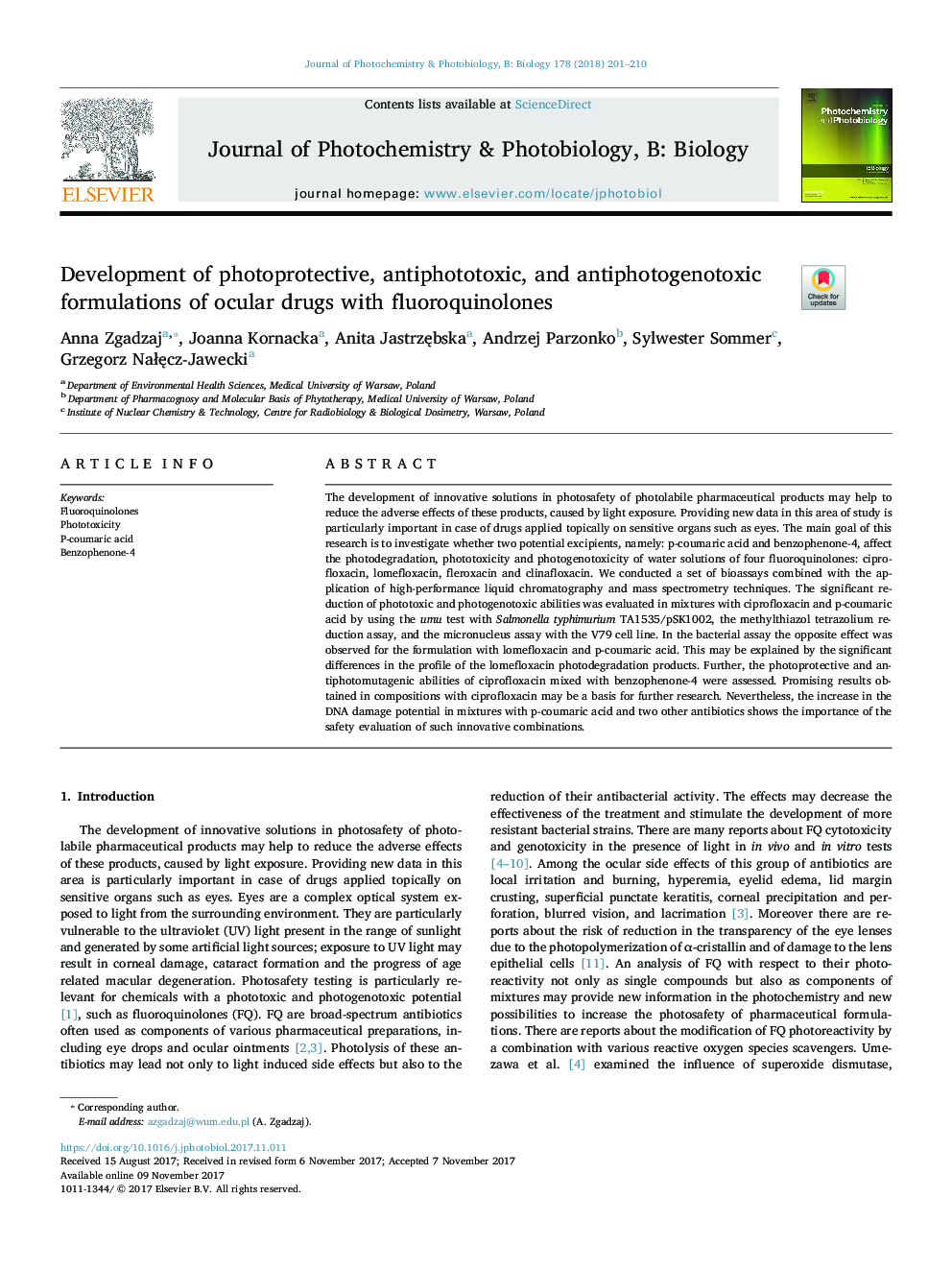| Article ID | Journal | Published Year | Pages | File Type |
|---|---|---|---|---|
| 6493419 | Journal of Photochemistry and Photobiology B: Biology | 2018 | 10 Pages |
Abstract
The development of innovative solutions in photosafety of photolabile pharmaceutical products may help to reduce the adverse effects of these products, caused by light exposure. Providing new data in this area of study is particularly important in case of drugs applied topically on sensitive organs such as eyes. The main goal of this research is to investigate whether two potential excipients, namely: p-coumaric acid and benzophenone-4, affect the photodegradation, phototoxicity and photogenotoxicity of water solutions of four fluoroquinolones: ciprofloxacin, lomefloxacin, fleroxacin and clinafloxacin. We conducted a set of bioassays combined with the application of high-performance liquid chromatography and mass spectrometry techniques. The significant reduction of phototoxic and photogenotoxic abilities was evaluated in mixtures with ciprofloxacin and p-coumaric acid by using the umu test with Salmonella typhimurium TA1535/pSK1002, the methylthiazol tetrazolium reduction assay, and the micronucleus assay with the V79 cell line. In the bacterial assay the opposite effect was observed for the formulation with lomefloxacin and p-coumaric acid. This may be explained by the significant differences in the profile of the lomefloxacin photodegradation products. Further, the photoprotective and antiphotomutagenic abilities of ciprofloxacin mixed with benzophenone-4 were assessed. Promising results obtained in compositions with ciprofloxacin may be a basis for further research. Nevertheless, the increase in the DNA damage potential in mixtures with p-coumaric acid and two other antibiotics shows the importance of the safety evaluation of such innovative combinations.
Related Topics
Physical Sciences and Engineering
Chemical Engineering
Bioengineering
Authors
Anna Zgadzaj, Joanna Kornacka, Anita JastrzÄbska, Andrzej Parzonko, Sylwester Sommer, Grzegorz NaÅÄcz-Jawecki,
